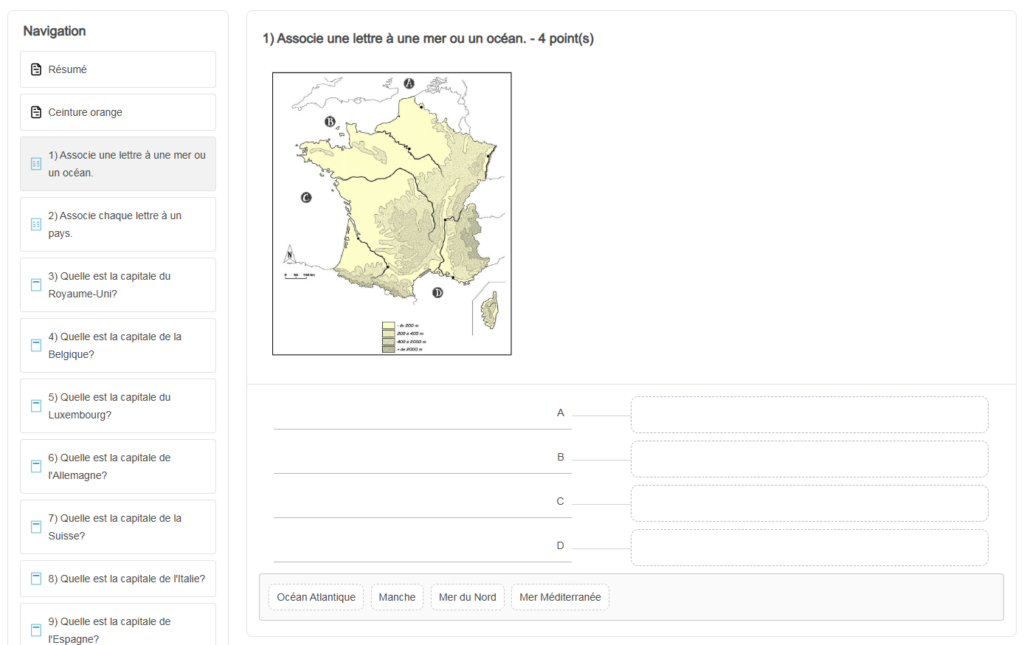Digital Learning Platforms: Supporting Differentiated Instruction

Creating an inclusive education system that provides personalized learning solutions for every student—that’s the essence of differentiated instruction, a proven methodology that adapts teaching to individual student needs. And digital tools are playing an increasingly active role in implementing this approach!
In our push for more inclusive education, differentiated instruction has become essential. “We can no longer justify offering the same learning approach to all students,” says Marie Pottier, who teaches grades 3-5 in Tuffalun, France. So how can you implement differentiated instruction in your classroom? Let’s explore some teacher experiences and discover how Édifice’s digital learning platforms can support this valuable approach.
Differentiated Instruction: Learning at Your Own Pace
Differentiated instruction encompasses all techniques used to teach students of the same grade level but with different abilities and needs, ensuring they all acquire core knowledge at the best possible level of mastery.
By nature, students within the same class have varying levels of ability, with different strengths and challenges. Differentiated instruction addresses a fundamental challenge in universal education: how do you effectively teach thirty students with different profiles?
A Teaching Approach for All Student Profiles
While differentiated instruction works particularly well for students with invisible disabilities, it’s not limited to them. By offering differentiated teaching, we adapt the learning pace in both directions, benefiting high-achieving students as well. “The goal is to build student confidence and create opportunities for success,” explains Pottier.
But how can teachers practically offer courses and exercises tailored to student levels without spending too much time? Nadège Gros, an elementary school teacher and former special education coordinator, shares her approach: “We work in pairs—one teacher handles the standard dictation and extended version for high-potential students, while the other manages the shortened, fill-in-the-blank version for students with difficulties, particularly those with learning disabilities. Then we exchange documents.”
The “Belt System”: Progressively Challenging Exercises
Inspired by martial arts training, Delphine Guichard created what she calls the “belt system“—a clever approach she shares on her popular teaching website “Charivari à l’école.” Just as martial artists progress through different colored belts, students work through increasingly challenging exercises in each subject. To advance to the next belt level, they need to pass an assessment, but here’s the smart part: each new level includes review material from previous belts, helping students continuously strengthen their foundation while building new skills.

Inspired by this method, Marie Pottier developed a set of six geography exercises with increasing difficulty levels, which are available in the platform’s resource library. To earn the “white belt,” students need to be able to locate France on a map of Europe and Paris on a map of France. From there, they progress to the yellow belt, and so on. “Everyone advances at their own pace,” she recalls. “I had a student who really struggled with spatial awareness, and differentiated instruction allowed her to keep working at it without holding back the rest of the class.”
Using Digital Tools for Differentiated Instruction
Fabien, a teacher in Caen, shares a Wiki for the “belt system” across different subjects for grades 3-5 through the digital platform’s library, helping other teachers save time and get inspired. “The first year took lots of prep time that stretched into summer, but once the exercises are created, the structure is there, and I only need to make occasional adjustments,” notes Pottier. However, differentiated instruction isn’t always so time-intensive. “Sometimes it’s as simple as letting a child count on their fingers if they need to,” Gros emphasizes.
Digital learning platforms prove to be valuable tools for implementing differentiated instruction. Educational technology can reduce the need for handwriting for students with dysgraphia, dyspraxia, or spelling difficulties. The Cantoo Web tool, which is available through some of Édifice’s platforms, offers options to change font size and type, adjust spacing, add syllable separation, and color-code words and syllables, making reading easier for students with learning disabilities. This saves time by eliminating the need to create different materials for each student.
As demonstrated by the “belt system,” the Exercises application allows teachers to offer different training activities adapted to each child’s knowledge level. Teachers can also record audio or video instructions using the platform’s Studio feature, saving time and energy for dyslexic students. “Multimedia Notebooks are excellent tools for differentiated instruction because they can present information suited to all types of learners. Some students will read, others will listen to audio and watch videos, and others will focus on visuals,” adds Gros. It’s about finding a solution for each student while maintaining an inclusive school environment!
comments
Add comment